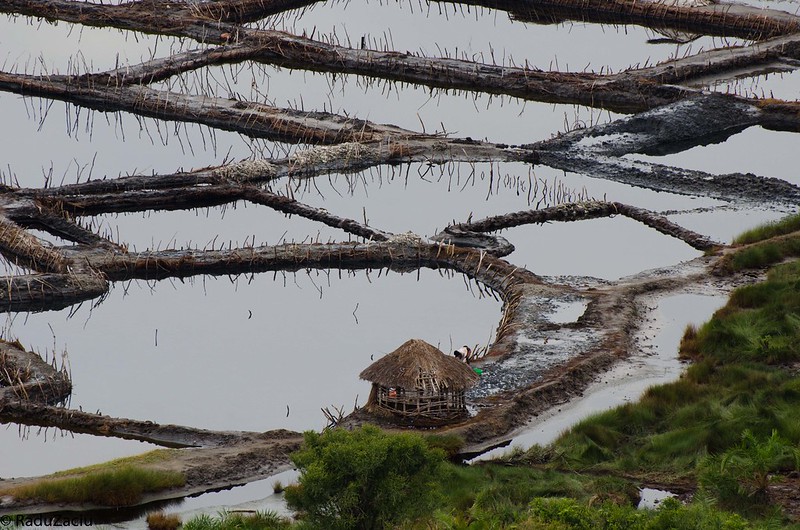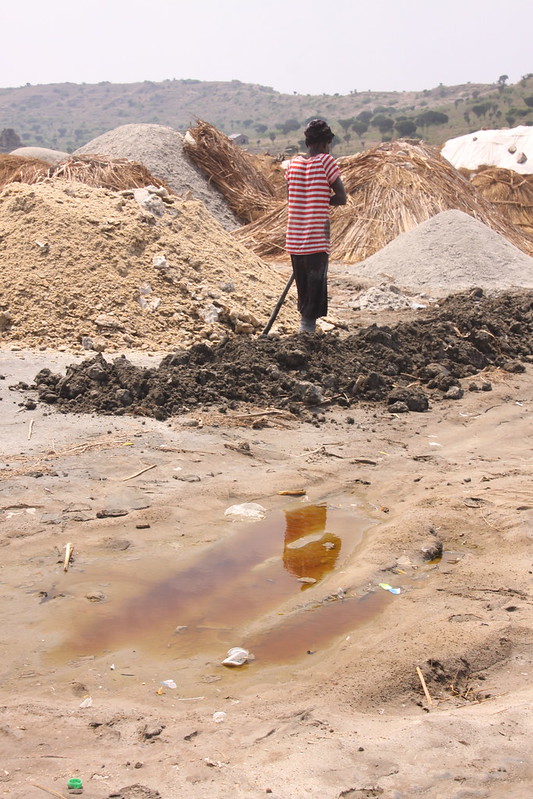Lake Katwe, Queen Elizabeth National Park
Lake Katwe is a saline lake situated in Kasese, in the southwestern region of Uganda. It is adjacent to Queen Elizabeth National Park. This natural feature in Uganda is highly renowned and attracts people on Uganda Safaris tours. I am eagerly anticipating the observation of salt manufacturing. Salt pans are artificial structures constructed beside Lake Katwe for the purpose of extracting salt. The lake is the largest among the eight lakes in the Katwe-Kikorongo volcanic field in western Uganda that have a high salt content.
Lake Katwe is renowned for its abundant salt deposits in the East African region, and for many years, salt has been extracted from this saline lake using ancient techniques. Salt miners construct salt pans adjacent to the lake to enhance evaporation, hence facilitating the concentration of salt. High temperatures cause the water to evaporate, resulting in increased salinity, particularly in dry seasons.
The types of salt extracted from Lake Katwe include edible salt, crude salt utilized by animals, and unclean salt. This salt is extracted by the local community, which has a significant proportion of salt miners. Salt miners have continued the traditional method of obtaining salt, a practice that has been employed for many decades.
Edible salt, often referred to as grade 1 salt, is produced in salt pans lined with mud. This process involves the evaporation of water, facilitated by the heat from the sun. The salt pans are particularly effective during dry seasons, since the higher evaporation rate allows the salt to dry more quickly. During the nighttime cooling of the lake, crystals are buoyant and will sink when they come into contact with man-made obstructions.
Crude salt, classified as grade 2, is a form of salt that is harvested from Lake Katwe. This salt is derived from the residue of the substances obtained from the pond toward the conclusion of the arid season, and it is primarily consumed by animals. The rock salt in grade 3 is another type of salt extracted from Lake Katwe. It is primarily mined by male miners who handle the tasks of unloading, stacking, and selling the salt.
The region’s semi-arid climate is marked by little rainfall and elevated rates of evaporation, making it unsuitable for industries like as agriculture. Consequently, salt mining becomes the primary viable choice. The local community, however, prefers sunny weather over rain because it decreases the amount of salt collected from the lake.

The chemicals taken from the lake are composed of several minerals, including sodium, chloride, potassium, carbonates, sulfate ions, calcium, magnesium, and bicarbonate ions. The salt extracted from the lake is of average quality and has been consistently produced for many years. The conventional techniques employed in salt mining have resulted in meager and contaminated salt production.
The salt in Lake Katwe is derived from a saline volcanic rock, while the saline springs surrounding the lake contribute significant quantities of saltwater to the lake. Salt miners collect brine, often referred to as “amaziba,” from the lake and redirect it into the salt pans.
Process of salt mining in lake katwe

The salt extraction procedure at Lake Katwe entails salt miners wading into the lake up to their waist and manually retrieving the salt. Prior to being sold, the black mud is spread out and subjected to drying, after which it is packed into bags. One of the applications of the black mud recovered from Lake Katwe is to sell it to cattle herders as salt licks for their livestock.
The salt pans, located along the periphery of the lake, are privately owned and occasionally passed down through generations within certain families. Extraction licenses are granted to select individuals for the purpose of mining in the central region of Lake Katwe. Licenses were issued to salt miners in order to prevent the depletion of the lake caused by salt mining. The female salt miners are reported to utilize their feet to pulverize little salt crystals into edible form, while the male salt miners venture out into Lake Katwe to extract the salt. Salt is extracted from mines and used for ingestion by both humans and animals.
The process of salt mining and processing includes the purification of salts to eliminate contaminants, which can be achieved using a leaching process. Selective precipitation can be employed as an alternative method for purifying salt in Lake Katwe.
Risks associated with salt extraction
The hazards associated with salt extraction in Lake Katwe are exacerbated by the absence of protective equipment used by the salt miners. The salt extraction process has detrimental repercussions for the salt miners, such as the development of severe sores on their hands and bodies, as well as cuts and wounds.
Additional hazards associated with salt extraction include potential reproductive health issues for both men and women, such as impotence or infertility caused by the elevated concentration of saline water in Lake Katwe. Nevertheless, this has not deterred the salt miners from diligently extracting salt. The atmosphere surrounding Lake Katwe is characterized by a noxious odor emanating from hydrogen sulfide gas and ammonia.
Additional activities in around of Lake Katwe
In addition to the salt mines, the local town also possesses craft shops that showcase traditional art and crafts. This serves as an additional source of revenue for both the salt miners and the local residents, enabling them to enhance their living conditions.
Visitors can engage in cultural excursions in the vicinity of Lake Katwe, which entail connecting with the local population and gaining insights into their way of life. This includes listening to their traditional tales, observing cultural dance displays, and exploring other aspects of their culture.
Tourists can get fundamental knowledge about salt mining, including the procedures, extraction techniques, and various types of salt that are mined. Queen Elizabeth National Park is another notable site in the vicinity of Lake Katwe.
Tourists partake in several activities when visiting this national park, including game drives, bird viewing, boat cruises along the Kazinga channel, trips to the crater lakes, and trekking. The Queen Elizabeth National Park is home to a diverse range of wildlife species, such as buffaloes, elephants, antelopes, waterbucks, leopards, warthogs, forest pigs, reedbucks, duikers, and various more. However, the absence of fish in the waters of lake Katwe can be attributed to the high salt level of the lake, which is not conducive to fish reproduction. The manufacturing of salt is a significant endeavor in Lake Katwe, which has enhanced the quality of life for the local community.
